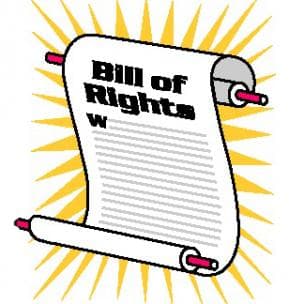Creating a supportive workplace for fundraisers
For years, I’ve taken copies of a donor bill of rights with me when I meet donors face to face. Along with a copy of my professional ethical code, I’ve found it useful in explaining what donors can, and should, expect when working with fundraisers.
- Written by
- Norma Cameron
- Added
- May 22, 2012

Well, something happened a couple of weeks ago to make me think about the need for a companion piece, a fundraiser bill of rights. Let me explain…
I was asked to speak at a fundraising workshop – to share some ‘tips and techniques’ about being successful. When preparing for this, I started writing a description of the ideal working environment – one that supported fundraisers and instilled in them a high level of comfort and confidence in approaching donors, regardless of whether that meant writing proposals, direct marketing, or meeting them face to face). I had a donor bill of rights sitting on my desk as I was jotting down ideas and voila, a fundraiser bill of rights was born.
While it was crafted in the spirit of fun, after presenting it, I realised that perhaps it’s not such a bad idea after all. And now, it’s over to you. What do you think?
A fundraiser bill of rights
To fulfil their charity’s mission and achieve a ‘win-win-win’ for their donors, their charity and themselves – fundraisers are best served by adopting a donor-centred approach. And a donor bill of rights is a wonderful guide to help them do so (see here in PDF format).
However, in order for donors to have full confidence in the charities and causes they are asked to support, fundraisers also need the tools and support necessary to build their comfort and confidence when representing the organisation to help achieve its mission. To this end, and some would say in a rather idealistic world, perhaps fundraisers need their own bill of rights? Perhaps this would include:
I
To receive a reasonable amount of time to research and prepare for engagement with donors regarding requests for funding.
II
To have access to the people and information required for such preparation. For example the opportunity to visit and/or interview programme people and beneficiaries to gain first-hand knowledge of the intended impact of the request for funds.
III
To have support from leadership in the form of approved policies – including gift acceptance, investment and, if applicable, endowment policies that reflect the current regulatory environment.
IV
To have the appropriate level of leadership approval on requests required to ensure information is delivered (and in time to meet their deadline for preparation).
V
To be involved and recognised as a key player in meetings that would assist in deepening the fundraiser’s understanding of the project, programme, or service requiring funding.
VI
To have their organisation keep its updated information relating to mission, vision, strategic plans, budgets, staff and volunteers, impact statistics, audited financial statements, CRA reports, etc in a centralised, accessible format and location.
VII
To have a clear understanding of how the organisation’s leaders (staff and volunteers) are supportive of the fundraising goals.
VIII
To be assured that gifts will be used in accordance with the purposes outlined in documentation and/or agreed to by the donor.
IX
The fundraiser should receive reasonable opportunities for professional development and mentoring to improve skills and knowledge.
X
To receive appropriate respect, acknowledgement and recognition for all aspects of their work, not only funds raised. The fundraisr should be part of the celebration when funding requests are sucessful and part of the review team when requests are declined.
Acknowledging that all rights come with responsibilities, fundraisers should do what they can to help their organisation create a culture that embraces this approach.
















